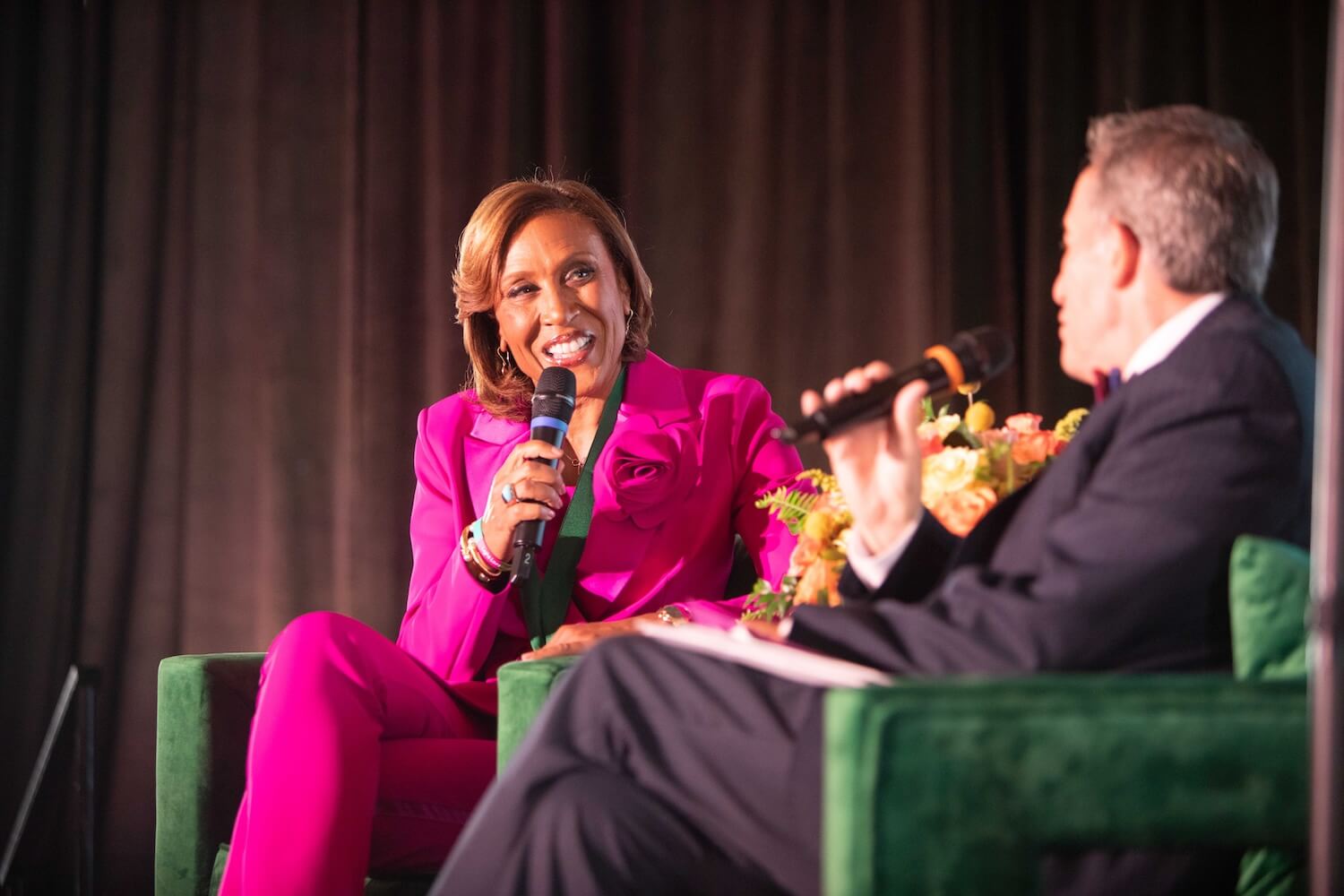 Covering COVID-19 is a daily Poynter briefing of story ideas about the coronavirus and other timely topics for journalists, written by senior faculty Al Tompkins. Sign up here to have it delivered to your inbox every weekday morning.
Covering COVID-19 is a daily Poynter briefing of story ideas about the coronavirus and other timely topics for journalists, written by senior faculty Al Tompkins. Sign up here to have it delivered to your inbox every weekday morning.
I saw this story on WHIO in Dayton, Ohio. The station reported that cops are seeing a lot more people driving 100 mph or faster. It started in the early days of the pandemic when the highways were vacant and it has not stopped.
Now, get this statistic: “More than 2,200 speeding tickets were given to drivers going faster than 100 mph since April, the Ohio State Highway Patrol released.” One guy was caught doing 147 mph near Cincinnati.
The Associated Press said it is unfolding nationwide:
The Iowa State Patrol recorded a 101% increase from January through August over the four-year average in tickets for speeds exceeding 100 mph, along with a 75% increase in tickets for speeds of 25 mph or more over the posted speed limit.
Utah state police saw a 23% jump in tickets issued for going 20 mph or more over the speed limit from March through August compared with the same time period last year. In Pennsylvania, patrol tickets for drivers exceeding 100 mph climbed in March but then stayed high from June through August, jumping 25% during that three-month period.
Police said, in addition to the light highway traffic in the early days of the pandemic, the problem has been compounded by police being spread thin by other duties, including managing protest crowds. When drivers see fewer officers checking speeders, they hit the gas. And yes, there is a cost to all of this, besides the tickets. The AP reported:
Vermont law enforcement officials believe an increase in the number of traffic fatalities recorded to date this year could be linked to fewer police on the road because of the pandemic. So far there have been 43 traffic fatality deaths, up from 21 at the same point last year.
In New Hampshire, cops cited eight drivers going faster than 100 mph just over the Labor Day weekend. And, near Omaha, The (Syracuse, Nebraska) Journal-Democrat reported:
Between July 11 and August 29, troopers in the Omaha Metro Area cited 134 drivers for speeding at 90 mph or more, including 39 who were driving in excess of 100 mph.
Maybe this will capture your reader/viewer/listeners’ attention: The wonderful show “MythBusters” crashed a car into a wall at 50 mph. Then they wondered whether it would cause twice the damage if they hiked the speed up to 100 mph. Just wait until you see what a 100 mph crash looks like. It left everyone on the show speechless.
Workers scramble to understand Trump’s payroll tax deferral
Congress has launched an effort to detail President Donald Trump’s payroll tax deferral that takes effect this month.
Under the IRS’s guidance, employers can stop withholding the part of Social Security taxes that employees pay through the end of the year for workers making less than $4,000 biweekly. It would amount to about a 6% increase in take-home pay. The money would then be collected by increasing the amount of taxes withheld from workers’ paychecks in the first few months of 2021. For a $2,000 paycheck (take home) it would amount to $120. But remember, you would have to pay that back in 2021 in addition to what the government normally withholds. It is essentially a loan with a short payback.
Private-sector businesses have generally been cold to the idea of putting their employees in the position of taking home less money in the first months of a new year.
Federal News Network, which covers issues having to do with federal government workers, reports that federal employees — including members of the military — may have no choice:
All active-duty military members as well as federal civilian employees will be subject to the president’s upcoming payroll tax deferral, a senior administration official told Federal News Network.
The president’s payroll tax deferral, which the administration said all payroll providers will launch in unison later this month, has left federal employees, their unions and members of Congress scrambling this week for more details.
The Coast Guard was the first branch to announce what was ahead. The news came with the word that it is “non-negotiable.”
The president announced the deferral a month ago, but to date, there are still few details. Federal News Network reported:
“Many employees have asked if there’s a way to somehow opt out of the deferral,” Robin Bailey, chief human capital officer at the IRS, told agency employees Friday morning in an email, which Federal News Network reviewed. “We have had many discussions with Treasury and they have confirmed that no eligible IRS employees can opt out since all Treasury payroll providers must adopt the deferral across the board. We’ll provide more specificity on who is eligible along with Q&As next week.”
The Hill reported that private employers are not willing to trust that Congress will make the deferral permanent, as President Trump said he would try to do if reelected.
Sean Kennedy, executive vice president for public affairs at the National Restaurant Association, said, “We’re still reviewing it, but it requires a restaurant owner to take a leap of faith that Congress will come together this year and make this deferment permanent.”
Industry groups said the best way for policymakers to provide payroll tax relief for workers is for Congress to pass legislation.
“What this really points back to is there’s really no good way to do this other than Congress and the president coming together and enacting a change into law,” Bradley said.
David French, senior vice president of government relations for the National Retail Federation, said his group has informally surveyed its members and found that most who responded do not plan to implement the deferral at this time, but that may change if Congress adopts legislation to forgive the deferred taxes.
Payroll companies including ADP said changing withholding calculations is not a simple matter, and would require a lot of management to quickly stop deducting and then turn around and collect more in January.
The Hill reported:
The American Federation of Government Employees, the largest union of federal workers, warned that implementation of the tax deferral will inflict financial pain in the new year.
How COVID-19 will change Jewish High Holy Days
The first wave of fall and winter religious holidays is about to have to adapt to the pandemic. Easter and Passover celebrations turned to Zoom in the spring. The pandemic diverted millions of Muslims who were planning to make the hajj to Mecca this summer.
Rosh Hashana starts the night of Sept. 18 and Yom Kippur begins the night of Sept. 27.
Rabbi Rick Jacobs, the president of the Union for Reform Judaism, the largest Jewish group in North America, told The New York Times, “Many Jews have been tapping into Shabbat services in Israel during the pandemic or tuning in to a temple in whatever time zone better fits the time of day they want to pray.”
Everyone, it seems, has to adapt. Websites like High Holidays At Home now offer ideas on how to prepare an altar and Seder. The Times story said:
Because of fears the ram’s horn might be a superspreader, some conservative synagogues are holding small in-person shofar services, often at local parks. Conservative rabbis question whether hearing the shofar over the internet counts as actually hearing it, said Rabbi Mark Asher Goodman, whose conservative Brith Sholom Jewish Center in Erie, Pennsylvania, is offering a drive-up Shofar blast in the parking lot. Meanwhile, New York City’s Central Synagogue — a reform congregation that has livestreamed its services free since 2008 — has prerecorded some shofar blasts.
How COVID-19 will change Halloween
Make no mistake that the holiday shopping season is vitally important to retailers (and media) and that 2020 will be way different for a bunch of COVID-related reasons.
I have seen so many people posting complaints on social media about how early they spotted Halloween stuff on store shelves. In a typical year, Halloween means about $9 billion to U.S. retailers, with average spending of a whopping $87 per shopper. 29 million people buy costumes for their pets.
Some of the biggest Halloween events have been canceled this year, including Universal Orlando Resort and Universal Studios Hollywood’s popular Halloween Horror Nights attractions. Other attractions said they will go to “touchless” horror attractions this year. Some are going to try drive-thru displays.
Look at what Americans did just a year ago and it is hard to imagine 2020 will look anything like that.

(Data and chart from National Retail Federation)
This is how we spent money on Halloween a year ago:

(Data and chart from National Retail Federation)
Online search and shopping trends point to costumes relating to Joe Exotic and Carole Baskin from Netflix’s “Tiger King” as being really hot this year. Costumes related to the “Hamilton” musical are also trending.
Of course, quarantine and COVID-19 themes are big this year. And there may be some Zoom-based Halloween parties.
Of note: I noticed that interest in the search phrase “Halloween costumes,” which usually really takes off right around Labor Day each year, is just starting to rise a little. It is like people have so much on their minds that Halloween does not register.

(Google Trends results for “Halloween costumes” over the last five years)
After Halloween, the Christmas shipping rush begins right away
As soon as those Halloween displays go away, look for Christmas sales to begin. As you might imagine, much of the shopping in 2020 will be online.
That will put new pressures on an already pressured delivery system.
“All the traditional last-mile delivery carriers (like FedEx, UPS and DHL) will run out of capacity at some point in the season,” predicts Caila Schwartz, a senior industry strategist at Salesforce Commerce Cloud. “So, we anticipate that 700 million packages are actually at risk of being delayed this year.”
- Some retailers will offer 15% discounts to people who fulfill in the stores, she says.
- 2020 is expected to be the biggest year yet for a trend called “click and collect” or “BOPUS” (buy online, pick up in store).
- Returned gifts and packages are expected to reach record levels as well.
UPS and FedEx — already strained by the COVID-induced ecommerce boom — are proactively slapping fees on huge mailers like Amazon and Target, sometimes as much as $3 to $4 per package.
We’ll be back tomorrow with a new edition of Covering COVID-19. Sign up here to get it delivered right to your inbox.
Al Tompkins is senior faculty at Poynter. He can be reached at atompkins@poynter.org or on Twitter, @atompkins.







